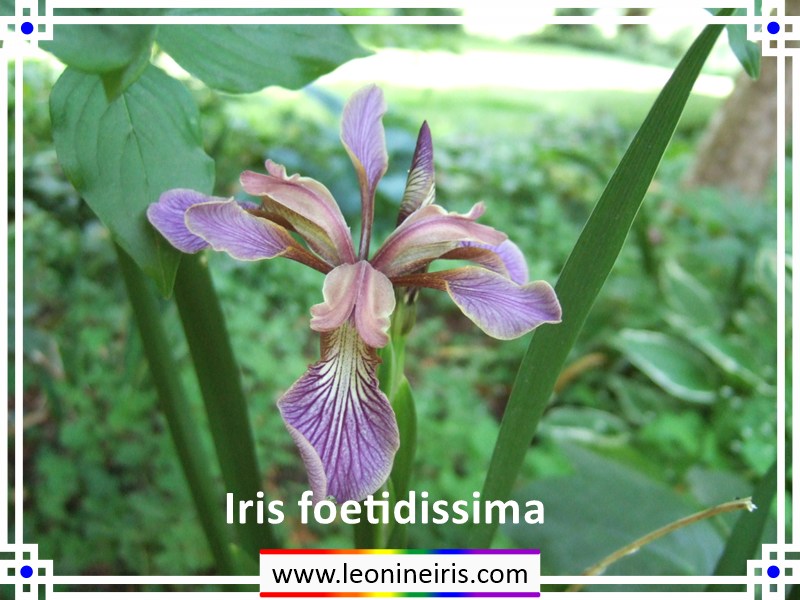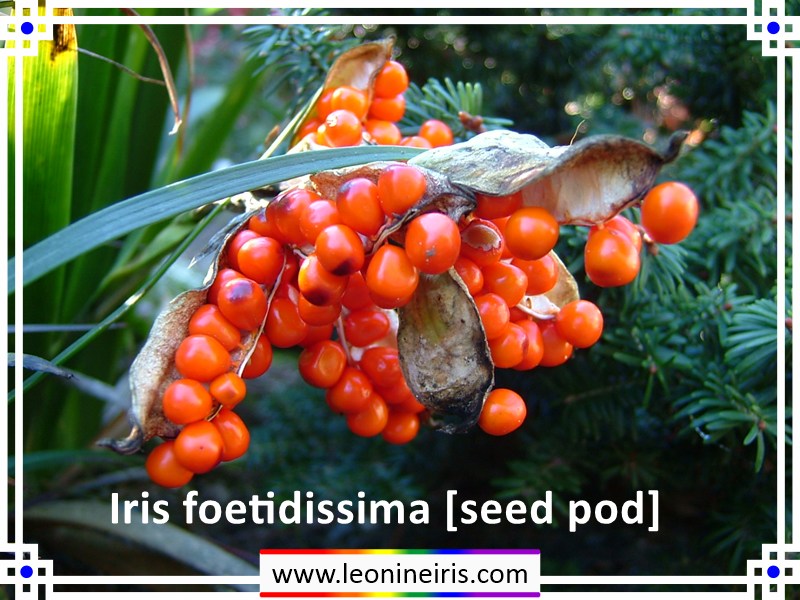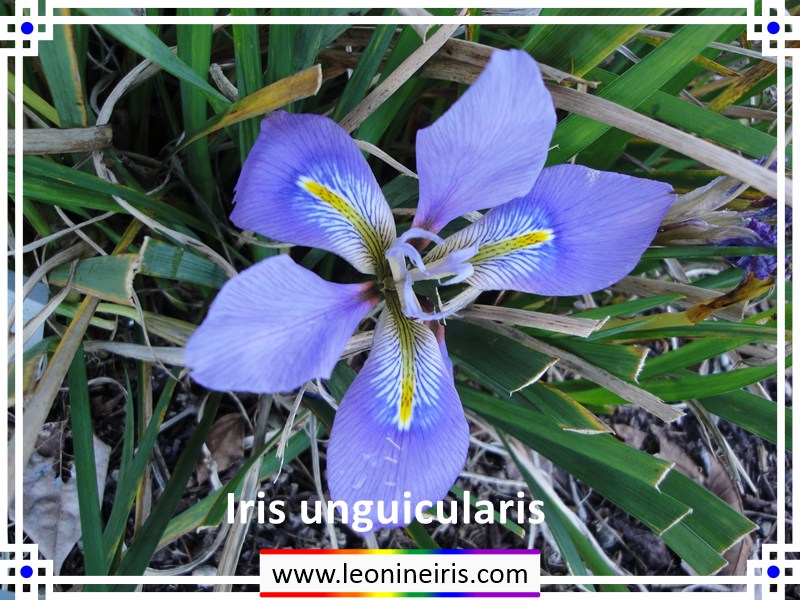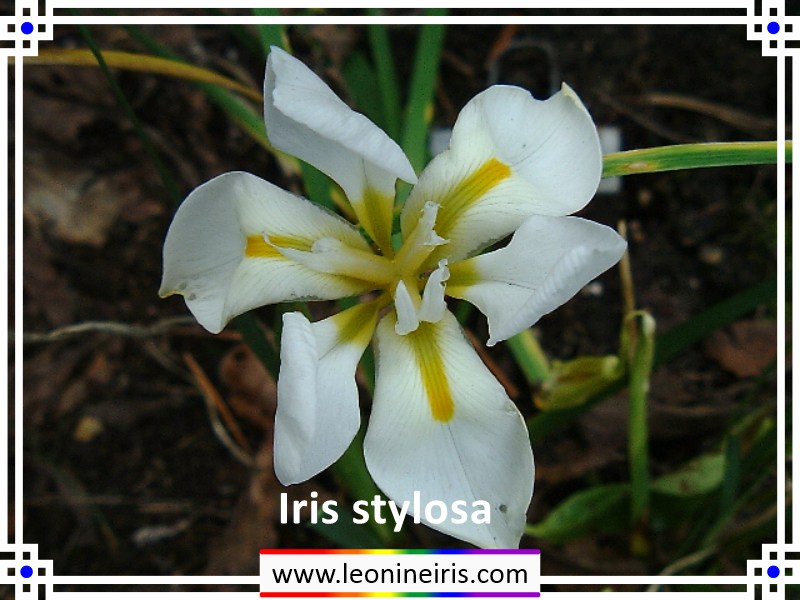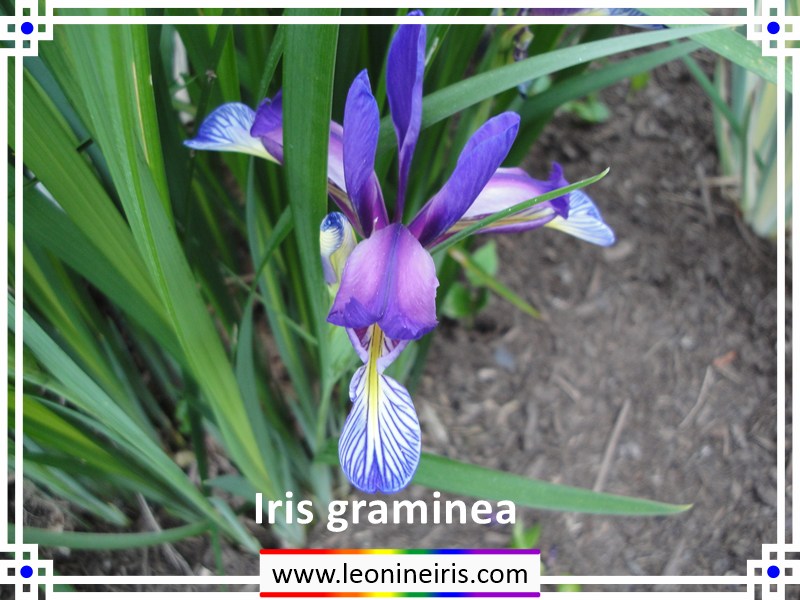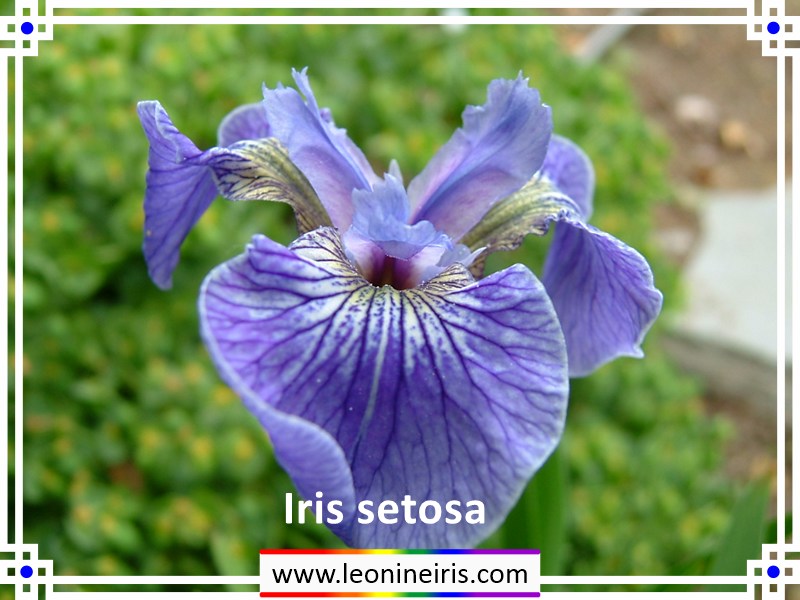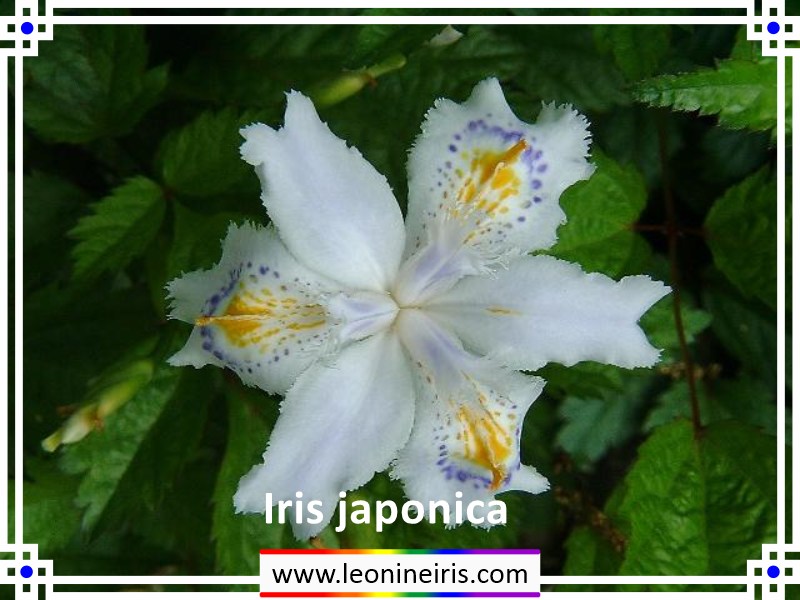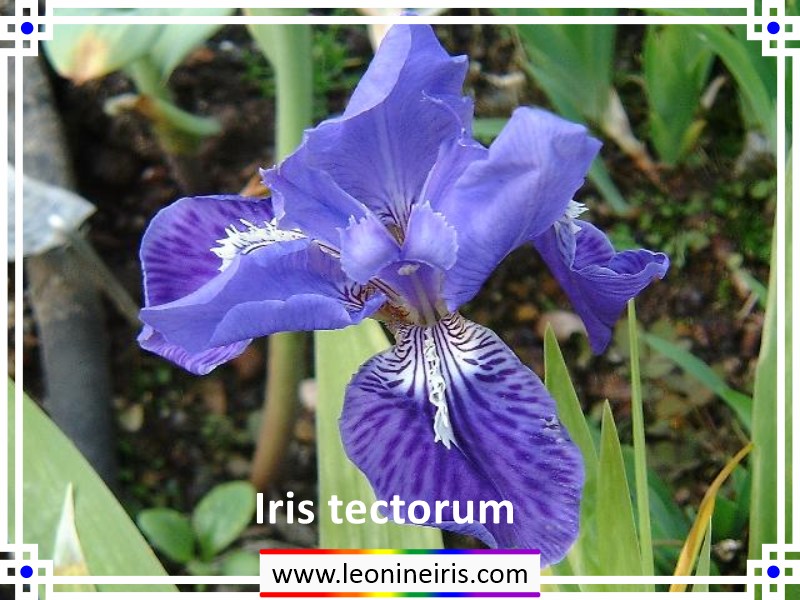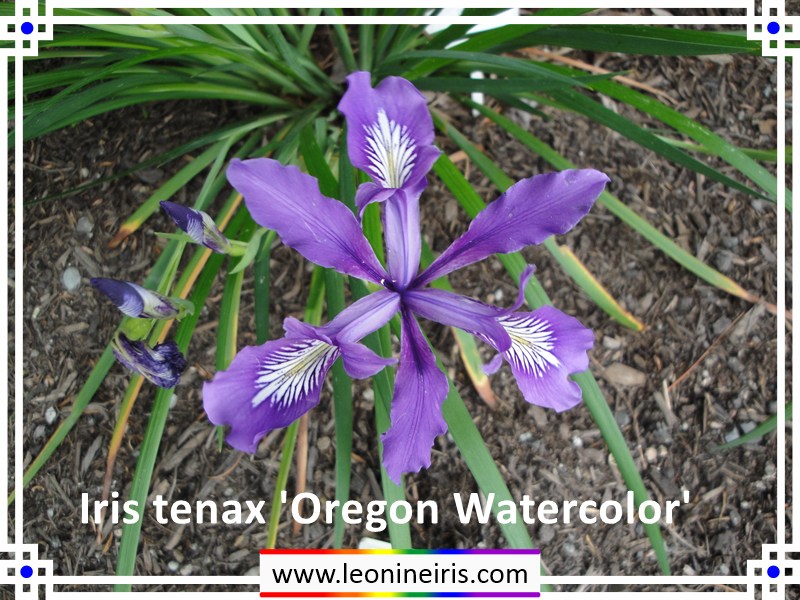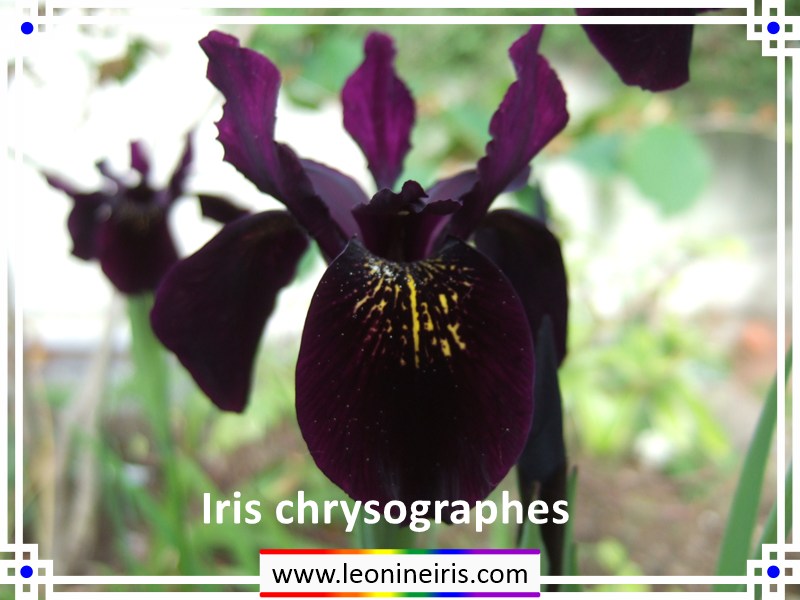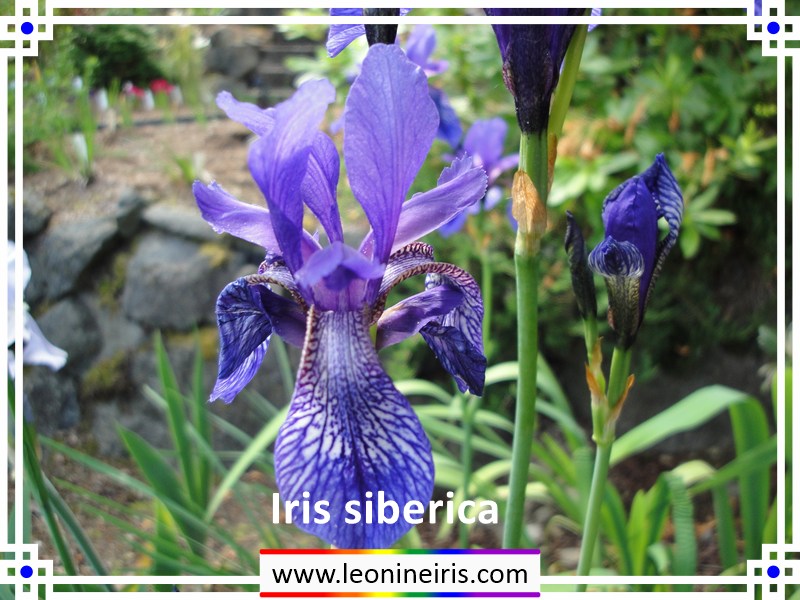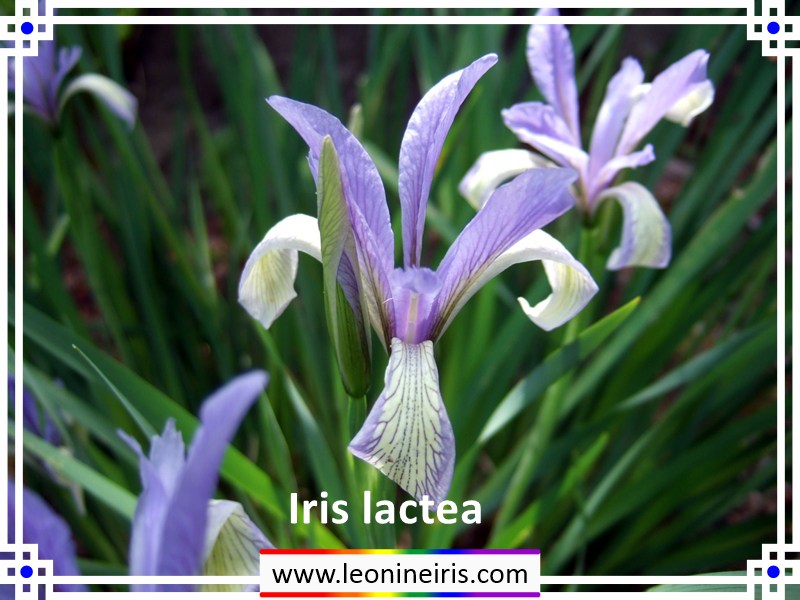Species iris are those iris that have not been hybridized into existence by human intervention. They are also the original genetic material from
which today's beautiful hybrids are created. Genetically speaking, follow a Tall Bearded irises roots (no pun intended) back far enough and
you will find Iris germanica. Then follow a lateral hybridization of Tall Bearded iris with Iris pumila and you
will find today's Standard Dwarf Bearded iris.
Just as do our hybridized iris, species iris come in many forms and colors, and grow in a wide variety of conditions. Here our focus is on
several species that grow well in the Pacific Northwest. The following information is just a summary of each species iris listed. Links have
been provided for sites that offer additional, more in-depth information. Enjoy!
Iris foetidissima
The flowers and foliage of
Iris foetidissima are relatively unremarkable, the fall color show makes these iris an
excellent candidate for any landscape. Mature seed pods will split open in Fall, displaying the colorful seeds stored inside throughout winter.
Seeds are usually orange, although recent hybrids promise shades of red, yellow and white. Just be forewarned that it isn't called the "Stinking
Iris" without cause. The fragrance of the flowers when they bloom can be somewhat pungent.
Iris unguicularis / Iris stylosa
Two more wonderful irises for the landscape! These iris add a nice spot of color throughout the winter! Yes, winter! The sweet
fragrance of
Iris unguicularis is also a bonus. FYI, experts are still arguing about whether
Iris stylosa is
actually a white form of
I. unguicularis or a separate species....
Iris graminae
A Spuria type of iris,
Iris graminae is a great addition to the landscape due to it's unusual grape-flavored scent! The
flowers are tucked down into the foliage (some think that this is actually a detraction) so plant this iris in an area that allows for
easy viewing and enjoyment of the scent.
Iris setosa
This iris can be a challenging to grow in the Pacific Northwest. A native of Alaska,
Iris setosa thrives in colder
temperatures. It also needs moist, yet well drained, soil. It grows readily from seed.
Iris laevigata
If you have a water feature or boggy area, consider
Iris laevigata as a colorful addition and safe alternative to
Iris pseudacorus!
Iris japonica
You might think that "japonica" would indicate that this is a Japanese iris, it isn't even close!
Iris japonica is
wonderful iris for under-story planting and naturalization. When grown in optimum conditions, semi-shade and even moisture, this iris can
become an aggressive and almost invasive. Sometimes also known as "The Walking Iris", this iris spreads by sending out above-ground runners.
One of the main attractions of this iris is the light delicate scent of the flowers and the airiness of the flower stalks, similar in style to
cymbidium orchids (thus earning it the sometimes nickname of "Poor Man's Orchid").
Iris cristata
One of the "crested" iris,
Iris cristata is a an excellent under-story or semi-groundcover plant since they spread by
sending out short "runners". Even moisture and part-sun are the best conditions for optimum growth. Keep in mind that these iris are only
semi-evergreen and will lose most, if not all, of their foliage in the winter.
Iris tectorum
Also known as the "Roof Iris",
Iris tectorum is an excellent choice for any garden, but especially so for the naturalized
garden. It will grow in full sun or full shade, although part sun is best for nice deep green foliage. Just as any iris that is part of the
crested group, these iris like woodland conditions that provide a rich soil high in humus kept slightly moist at all times. They are all heavy
feeders so a dressing of compost or manure in fall and a bit of low nitrogen (5-10-10) fertilizer in the spring is beneficial.
Iris tenax
A semi-native to the Pacific Northwest and often seen growing in the wild,
Iris tenax is an excellent addition to a naturalized
garden, if you can find it!
Iris chrysographes
A fabulous addition to the garden, but not easy to find in our immediate area, Iris chrysographes provides striking
almost-black flowers in the spring and soft, lush foliage throughout the summer.
As it is an herbacious perennial, it does die down to the ground in winter.
Iris typholia
Not a typical gardens iris, the species provides unusual texture to
the garden with it's "twisty" leaves. Flowers are basic blue and
quite similar in shape to garden Siberian irises.
Iris siberica
One of the genetic ancestors of our modern day Siberian hybrids.
I. siberica flowers stand high above the the thin foliage. This
is a great plant for the back of a mixed bed.
Iris pseudacorus
Considered to be a noxious weed by the State of Washington, this iris is
tough as nails and spreads much too prolifically from seed. The key
to using this iris in the garden is to keep it away from constant
moisture and
remove any seed pods that may form before they
ripen! Named hybrids are available. It's also used in species
crosses.
Iris milseii
An iris that bears crested flowers on tall, delicate stems. The pronounced veins
in the pale green leaves add texture and color elements to any
perennial bed.
